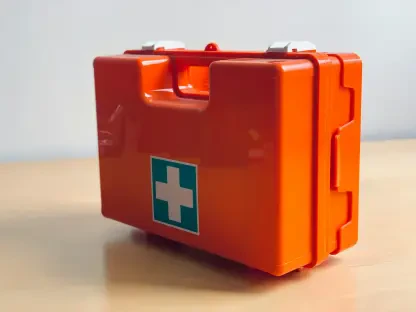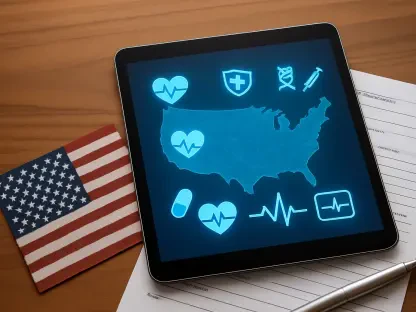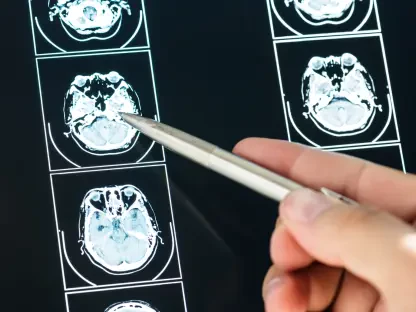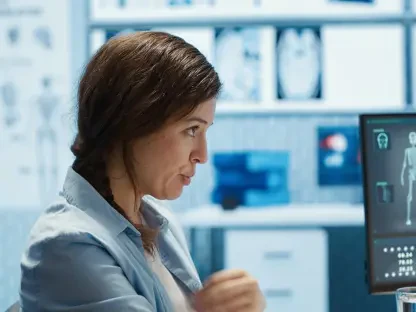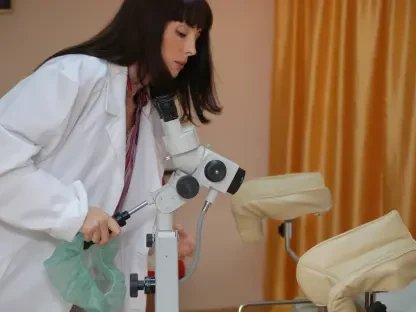We are speaking with James Maitland, an expert in robotics and IoT applications in medicine, who has a strong passion for leveraging technology to advance healthcare solutions. Today, we dive into a recent initiative by Philips to improve maternal health outcomes in Georgia through remote monitoring in partnership with Amerigroup, CareSource Georgia, and Peach State Health Plan.
Can you explain what motivated Philips to partner with Amerigroup, CareSource Georgia, and Peach State Health Plan for this initiative?
The partnership was motivated by a shared mission to improve maternal health outcomes, particularly for high-risk pregnancies. By collaborating with these organizations, Philips can leverage their resources and networks to provide RPM solutions and support to underserved communities in Georgia.
Why did you choose Georgia as the state for launching this program?
Georgia was chosen due to its significant challenges in maternal healthcare, including a high prevalence of high-risk pregnancies, many maternity care deserts, and shortages of OB-GYNs in non-metro areas. Additionally, nearly 50% of births in Georgia are covered by Medicaid, making it a critical state to address these issues effectively.
What is the primary goal of the partnership regarding maternal healthcare?
The primary goal is to expand access to high-quality maternal healthcare and improve outcomes for mothers and babies in Georgia, particularly in underserved areas. The program aims to support pregnant individuals with maternal hypertension and diabetes and ensure they receive the necessary care and monitoring.
What specific challenges in maternal healthcare does this program aim to address?
The program addresses challenges such as the high prevalence of high-risk pregnancies, the lack of adequate maternal healthcare services in many counties, and the shortage of OB-GYNs in non-metro areas. It aims to provide timely interventions and continuous support to prevent complications and improve health outcomes.
Can you describe high-risk pregnancies and their prevalence in the United States?
High-risk pregnancies are those where the health of the mother, the baby, or both are at increased risk of complications. Factors like hypertension and diabetes contribute to a high-risk classification. In the U.S., about 62% of pregnancies are considered high-risk.
What factors contribute to a pregnancy being classified as high-risk?
Factors include chronic conditions like hypertension and diabetes, advanced maternal age, multiple pregnancies (twins or more), pre-term labor history, preeclampsia, and lifestyle factors such as smoking and obesity.
What are “maternity care deserts,” and how prevalent are they in the United States?
Maternity care deserts are areas lacking adequate access to maternal healthcare services, including OB-GYNs, midwives, and birthing centers. Over 35% of U.S. counties are considered maternity care deserts, greatly impacting healthcare access for expectant mothers.
How do OB-GYN shortages impact the availability of maternal healthcare in non-metro areas?
OB-GYN shortages in non-metro areas limit access to essential prenatal and antenatal care, forcing expectant mothers to travel long distances for appointments. This lack of accessibility can lead to delayed or missed care, increasing the risk of complications during pregnancy and childbirth.
How does Georgia’s ranking in maternal mortality influence the need for this program?
Georgia ranks 31st out of 40 in maternal mortality, highlighting a critical need for improved maternal health services. This program aims to address these deficiencies by providing accessible and continuous care to high-risk pregnancies, ultimately aiming to reduce maternal mortality rates.
What is the Georgia Healthy Babies Act, and how does this program support it?
The Georgia Healthy Babies Act is a legislative initiative aimed at improving maternal and infant health outcomes in the state. This program supports the Act by providing targeted interventions, monitoring, and continuous care to high-risk pregnancies, contributing to the overall goals of the Act.
Which counties in Georgia will initially be targeted by this program?
The program will initially focus on 50 counties across Georgia, particularly those with high needs and limited access to maternal healthcare services. These counties were chosen to maximize the impact of the initiative.
How will pregnant women with maternal hypertension or diabetes be identified and enrolled in the program?
Participants will be identified through screenings and referrals from healthcare providers. Those covered by Medicaid and meeting the criteria for high-risk pregnancies due to maternal hypertension or diabetes can opt into the program.
What types of remote patient monitoring (RPM) devices will participants receive, and how do these devices work?
Participants will receive RPM devices such as blood pressure monitors and glucometers. These devices track key health metrics and transmit data to clinicians, allowing for continuous monitoring and timely interventions if necessary.
Who are the clinicians providing personalized coaching and support in this program?
Philips-trained clinicians, including nurses, dietitians, and certified diabetes educators, provide personalized coaching and support to participants, ensuring they receive comprehensive care tailored to their needs.
What kind of training do Philips’ clinicians undergo to ensure they are effective in this program?
Philips’ clinicians undergo rigorous training in maternal health, remote patient monitoring technologies, and personalized coaching techniques. This ensures they can effectively support participants and address any complications that arise.
How does the remote monitoring process help in preventing complications during high-risk pregnancies?
Remote monitoring allows for the continuous tracking of vital health metrics. If readings fall outside normal ranges, clinicians can intervene quickly, providing guidance and assessing symptoms to prevent complications.
What specific parameters or readings will be monitored remotely?
Parameters include blood pressure and glucose levels, among others. These key indicators help clinicians track the health of both mother and baby and quickly address any abnormalities.
How will clinicians respond if a participant’s readings fall outside of the normal range?
Clinicians receive real-time alerts if readings are abnormal. They will then contact the participant to assess symptoms, provide guidance, and determine if further medical attention is needed.
What support will participants receive up to 90 days postpartum?
Participants will continue to receive remote monitoring, personalized coaching, and support for up to 90 days postpartum. This ensures ongoing care during a critical recovery period.
How does this program ensure continuity of care during the critical postpartum period?
Continuous monitoring, regular check-ins, and personalized coaching maintain care continuity. The program’s structure provides ongoing support and intervention if needed, enhancing postpartum outcomes.
Can you share any success stories or early results from this program?
Though it’s still early, preliminary feedback indicates improved health metrics and positive experiences among participants. Detailed success stories and data will emerge as the program progresses.
How does Philips plan to measure the success of this initiative?
Success will be measured through health outcomes, participant satisfaction, and the reduction of complications in high-risk pregnancies. Regular data collection and analysis will track the program’s impact.
Are there plans to expand this program to other states or regions in the future?
Yes, based on the success and learnings from the Georgia program, Philips plans to explore expanding to other states and regions facing similar maternal healthcare challenges.
What are some barriers to expanding maternal healthcare access that this program might help overcome?
Barriers include geographic limitations, provider shortages, and lack of access to quality care. The program’s RPM solutions and personalized support help overcome these challenges, making maternal healthcare more accessible.
How do you envision the collaboration between Philips and health plans evolving over time?
The collaboration can evolve to include more comprehensive services, expand to additional regions, and incorporate feedback to improve program delivery. Continuous innovation and shared goals will drive this evolution.
What role do policymakers play in supporting initiatives like this one?
Policymakers are crucial in creating supportive legislation, providing funding, and fostering partnerships that enable programs like this to scale and succeed. Their support is vital for sustained impact.
How do you plan to keep the participants engaged and compliant with the monitoring process?
Engagement will be maintained through regular check-ins, personalized coaching, user-friendly technology, and by demonstrating the benefits of continuous monitoring. Providing clear health outcomes motivates compliance.
How does Philips ensure data privacy and security for participants using RPM devices?
Philips follows stringent data privacy and security protocols, including encryption, secure data transmission, and compliance with healthcare regulations such as HIPAA to ensure participants’ information is protected.
What additional resources or support will be available to participants experiencing complications or needing further medical attention?
Participants can access additional medical care through referrals to specialists, emergency services if needed, and continuous support from the program’s clinical team for any complications.
How can other organizations or healthcare providers get involved in similar initiatives to improve maternal health?
Organizations can collaborate with healthcare innovators like Philips, leverage technology for remote monitoring, and advocate for policies that support maternal health initiatives. Building partnerships and investing in scalable healthcare solutions are vital steps.
Do you have any advice for our readers?
Stay informed and proactive about healthcare advancements, especially if you’re involved in maternal health. Embrace technology as a powerful tool to improve healthcare outcomes and advocate for accessible, high-quality care for all.


